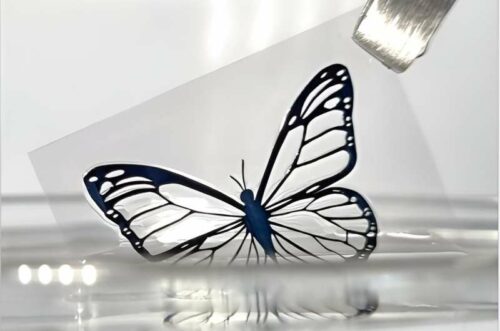Researchers from several South Korean universities have developed a new biocompatible hydrogel from a purely conducting polymer.

The swift progress in electronics and artificial intelligence (AI) tools has created exciting possibilities for the creation of technologies across various applications. This includes implantable devices aimed at enhancing treatment options for medical conditions, monitoring biological processes, or boosting human capabilities.
Researchers from Seoul National University, the Korea Advanced Institute of Science and Technology (KAIST), Konkuk University, and Hanyang University have developed a new hydrogel made from a purely conducting polymer that could be utilized to manufacture bio-compatible devices.
Since many soft polymer substrates can transmit the most visible light, the team opted to invert substrates coated with PEDOT:PSS and expose them to a 532 nm laser beam. This approach allowed the beam to pass through the transparent substrate, enabling the PEDOT:PSS polymer to absorb it. As a result, concentrated photothermal energy was generated at the interface with the substrate, enhancing the process’s effectiveness.
The researchers’ laser-assisted micropatterning technique simply involves laser irradiation, eliminating complex pre-processing steps. This method requires only the careful drying of PEDOT:PSS on polymer substrates and precisely defined laser scanning conditions.
The researchers treated their hydrogel with ethylene glycol. Employing this method, they created a hydrogel pattern with a resolution of 5 μm, matching the resolution typically achieved through photolithography techniques. Photolithography is one of the most sophisticated techniques for high-resolution patterning of hydrogels. Although it offers impressive resolution, it demands intricate and costly manufacturing processes and does not ensure the strong adhesion of polymers to substrates.
In preliminary experiments, the team’s hydrogel demonstrated excellent performance, showing strong adhesiveness and stability in moist environments. Furthermore, they observed that the hydrogel retained its bonding strength even after intensive ultrasonic cleaning, a feature that could prove beneficial for creating implantable devices.
The latest research could soon facilitate the development of new electronics designed to function within the human body. Ko and his colleagues apply their micropatterning technique to produce bio-compatible soft hydrogel electronic components.
Reference: Daeyeon Won et al, Laser-induced wet stability and adhesion of pure conducting polymer hydrogels, Nature Electronics (2024). DOI: 10.1038/s41928-024-01161-9








